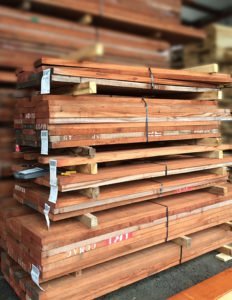
There is a pandemic in the lumber business where everyone wants to find wood as wide and as long as possible. Many times the specified lumber is much bigger than the eventual parts it is to be made into. The argument for this is higher waste per board, better color match, and those who want to rip and glue back together for better stability (don’t get me started on that wives tale). I’m here to tell you that bigger isn’t better.
I know, I know that’s un-American to say such a thing, but the fact is some of the clearest and prettiest lumber you can find is in narrow and short sizes.
Lumber grading is a percentage game. The grade is based on the percentage of defect free material and the minimum cutting size from the board. I have done several posts on grading rules here, and a quick search (hint: that little search box on the top right of the webpage) will direct you to a few articles if you are interested in more detail.
Automatically, if you have a board that is narrower and shorter than the FAS or FEQ grade allows, it will fall into a lesser grade. The percentage of clear required goes down too, but here’s the thing. With lesser total real estate, the allowable percentage is a lesser total area of defects, too. Around here, most of the time that we have lumber which doesn’t meet a top grade, it is a size issue and not a defect issue. So our select and common lumber is usually 100% defect free. Or perhaps it has a tiny bit of a knot or similar on an end or off the side. Taken from a percentage, you get like 95% or better clear.
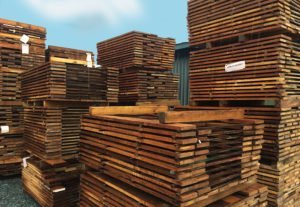
Most of the customers I talk to don’t actually need the size they initial state, when you really get down to what they are building and how they will do it. Often you discover that they plan to rip and crosscut most of their boards substantially down to size, and they are buying lumber like they would buy a sheet good and have a Tetris looking cut sheet in mind.
We can help you when wide and long are a necessity, but I think you will find our team of folks working hard to understand what you actually need, because the byproduct of this wide and long craze is an awful lot of short and narrow lumber that starts to pile up. Usually this material can be purchased at a lower price point, and if you get my meaning above, there is a high chance that it will be of better quality to reduce your waste factor.

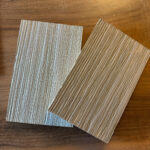

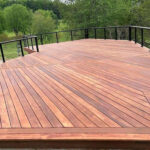
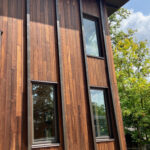




It is really interesting to think that smaller sections of wood can actually be better than larger sections. It seems like just about any shape or size of wood can work for any project if you get enough of it. I definitely had no idea that there was such a high demand for bigger sections of wood. Hopefully that is something that will be able to change in the future.